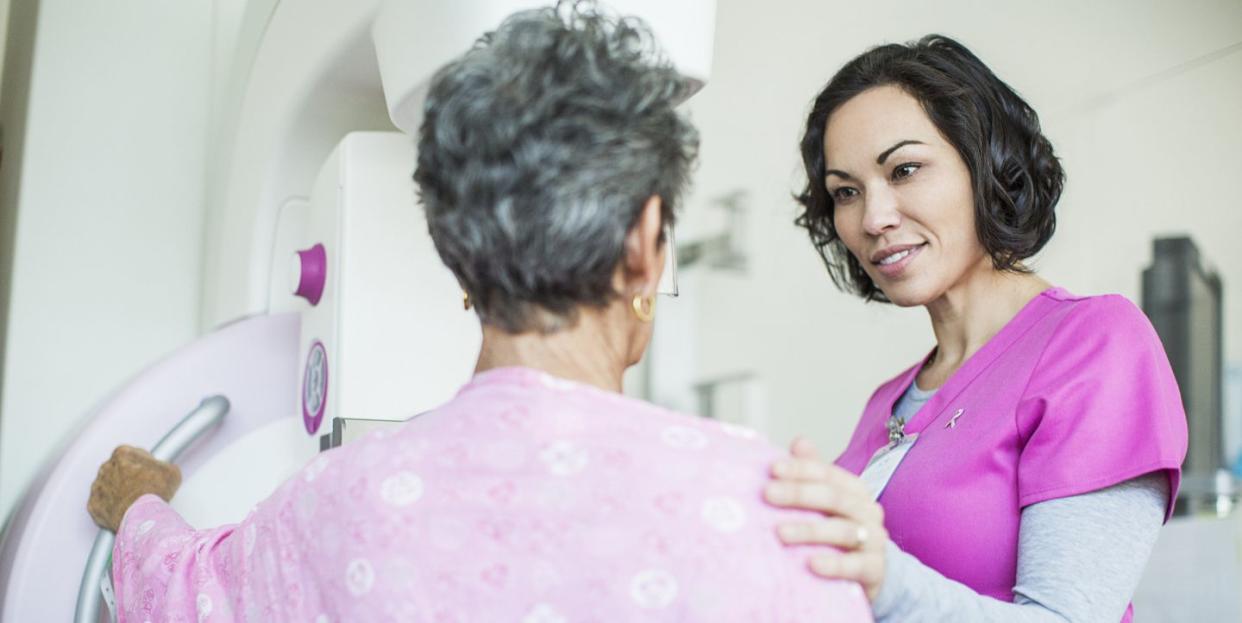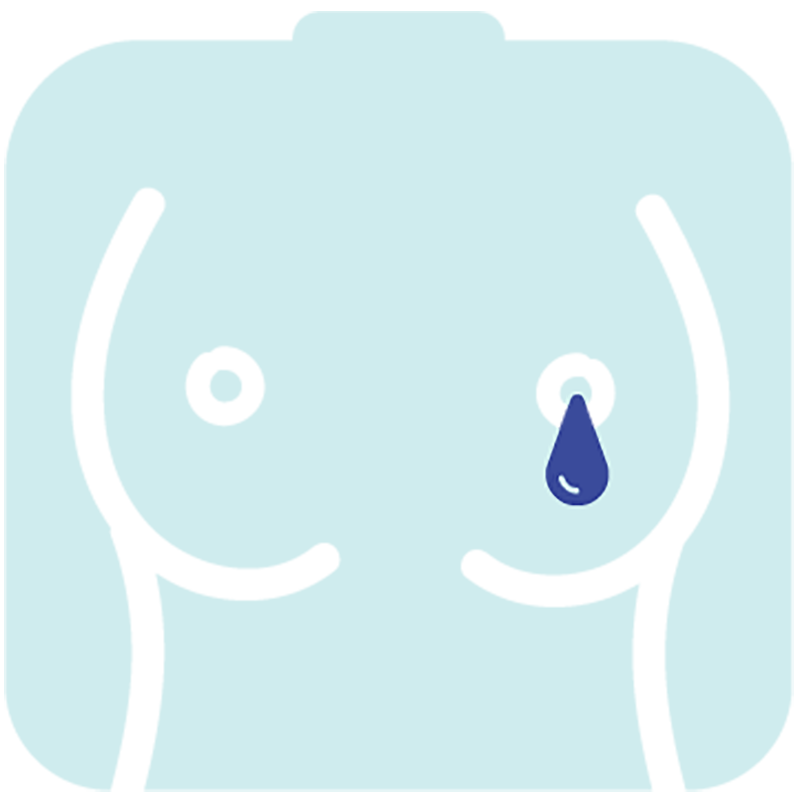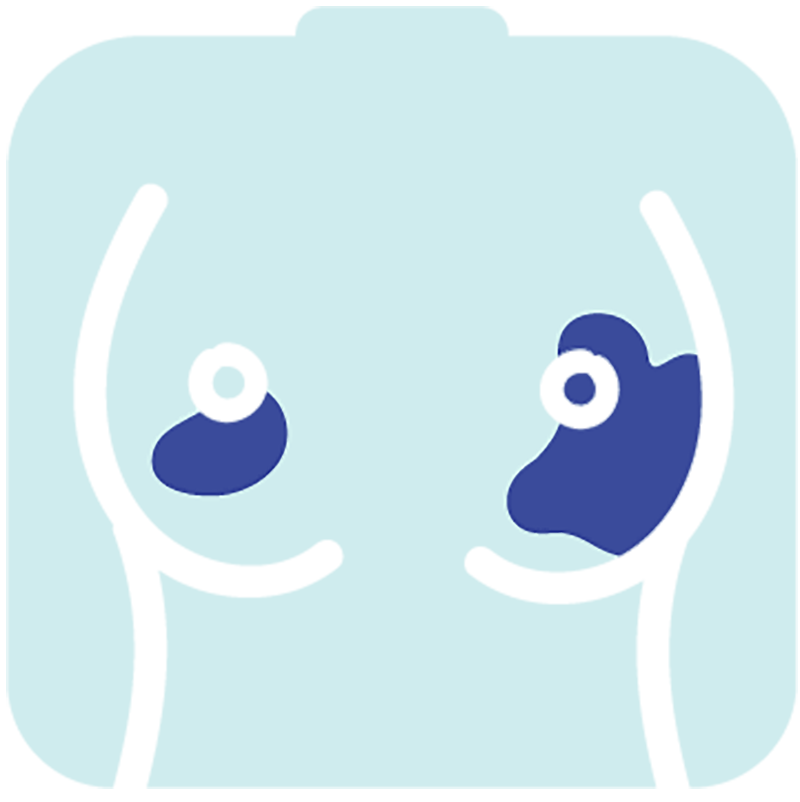6 Breast Cancer Symptoms That Have Nothing to Do With Feeling a Lump

- Oops!Something went wrong.Please try again later.
A breast cancer diagnosis often goes something like this: A woman feels a lump on her breast and makes a doctor’s appointment. The doctor conducts some tests—which may include a breast exam, mammogram, ultrasound, biopsy, or a combination—and determines the lump is cancerous. But, there are breast cancer symptoms that have nothing to do with feeling a lump.
Up until recently, women were encouraged to complete self-exams regularly and be familiar enough with their breasts to notice any changes. The current American Cancer Association guidelines don’t recommend self-exams as a screening method anymore, but encourage women to have regular mammograms, explains Minna Lee, M.D., a breast surgical oncologist at Memorial Sloan Kettering Cancer Center.
“Our screening imaging has gotten much better, and mammograms are the current screening method of choice. They can pick up things much smaller than our fingers can,” she says. But that doesn’t mean you should forgo focusing on your breast health in between doctor visits. Be aware of your body, and let your doctor know of any changes you see or feel, Dr. Lee encourages.
“Every woman knows her body best," Dr. Lee says. She recommends calling a professional if you notice any change out of the normal. “There’s no need to sit at home and be anxious. If you feel something different, or see something different, that’s what we’re here for,” Dr. Lee says.
Generally, it’s recommended for women over 40 to get a mammogram every year. But this can vary, so it’s most important to keep an open conversation with your primary care doctor or gynecologist and work with them to determine when you should start mammogram screenings and how often, Dr. Lee says.
And what should you be looking out for in-between mammogram screenings? Lumps in the breast tissue are the most well-known breast cancer symptoms, but a lump isn’t the only breast cancer symptom to keep your eye out for. In fact, a 2017 study published in the journal Cancer Epidemiology found that one in six women diagnosed with breast cancer experience a spectrum of symptoms other than a breast lump.
Because there’s not as much awareness of these less common breast cancer symptoms, the researchers hypothesized that so-called “atypical presentations” could be delaying some women’s diagnoses. Of course, an earlier diagnosis results in earlier treatment, which typically tends to work best, says Joseph Weber, M.D., a breast surgical oncologist at Aurora Health Care in Milwaukee.
At the end of the day, you know your body and its changes best. In the Cancer Epidemiology study, 83% of the women who had breast cancer symptoms and were diagnosed found a lump first. However, a little more awareness of other signs can’t hurt. “Our results highlight opportunities for a shift in emphasis in symptom awareness campaigns toward breast symptoms other than breast lump,” the researchers write.
Dr. Weber agrees. “If women notice any changes in their breasts, they need to have a professional evaluate them,” he says. “Talk to a doctor about anything that looks different from their normal appearance.” Here are the main breast cancer symptoms to watch out for.

Skin irritation or dimpling
A rough patch of skin that feels scaly or thicker than usual or skin that starts to dimple can signal breast cancer, Dr. Weber says. With some breast cancers, channels that go from the inside of the breast to the skin become blocked, resulting in skin changes that make the breast look like it’s covered with an orange peel. This can also be a sign of an infection or mastitis, so it’s not something to ignore, Dr. Lee adds.

Breast or nipple pain
Many things can cause pain in your breasts or nipples, like PMS, pregnancy, or even menopause. But if you notice persistent pain along with other breast cancer symptoms, it’s important to report the experience to your doctor—regardless if it’s a sharp twinge or a dull ache. Cancer that is growing can stretch tissue and cause pain, Dr. Lee explains.

Nipple retraction
Some breast cancers will cause what’s called nipple inversion or retraction, in which the nipple turns inward. Typically, that’s because a mass is growing inside the breast and changes its shape, Dr. Weber explains. In the recent research, 7% of the women who were diagnosed with breast cancer reported nipple abnormalities.

Nipple discharge
Another possible nipple abnormality can be discharge that’s not breast milk. Nipple discharge is, thankfully, most often not cancer, but it’s important to see a doctor immediately if the discharge comes out without you touching or squeezing the nipple, especially if it’s bloody (this may looks like a coffee or cola stain on their bra) and only affecting one side, Dr. Lee says.

Color or texture changes
This can include redness, darkening, scaliness, or thickening of the nipple or breast skin. One type of breast cancer called Paget disease—a rare form that starts at your breast ducts and spreads to the nipple and areola—is often accompanied by a rash. “Any change in the look of the breast is worth getting checked out. Even if it’s not cancer, it likely needs to be treated,” Dr Lee says.

Swelling of all or part of a breast
Inflammatory breast cancer often starts with red, inflamed skin that swells as cancer cells clog the vessels that carry lymph fluid. This is an extremely rare form of breast cancer, but it does happen, Dr. Lee says.
You Might Also Like

